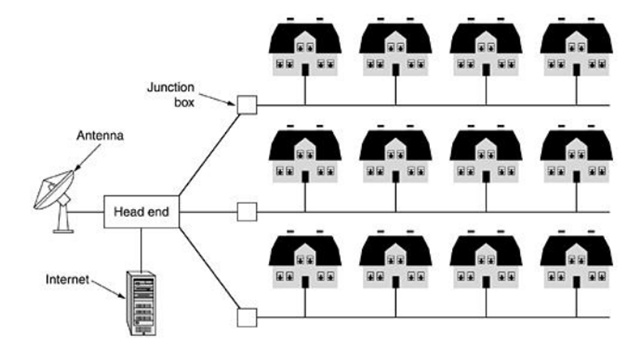A metropolitan area network, or MAN, works over the city. The widely-known example of a MAN is the cable television network accessible in many cities. This system grew from previous community antenna systems used in areas with poor over-the-air television reception. In these early systems, a big antenna was placed on top of a nearby hill and signal was then piped to subscribers' houses.
At first, they were locally-designed, ad hoc systems. Then companies started jumping into the business, getting contracts from city governments to wire up an whole city. The next step was television programming and even the whole channels designed for cable only. frequently these channels were highly specialized, such as all news, all sports, all gardening, all cooking and so on. But from their beginning until the late 1990s, they were intended for television reception only.
To a first approximation, a MAN may seem something like the system shown in Fig.2. In the given figure both television signals and Internet are fed into the centralized head end for subsequent distribution to the people's homes.

Television cable is not the only MAN. Recent inventions in high-speed wireless Internet access resulted in another MAN, which has been standardized as IEEE 802.16. A MAN is implemented and applied by a standard called DQDB (Distributed Queue Dual Bus) or IEEE 802.16. DQDB it has two unidirectional buses (or cables) to which all the computers are linked.